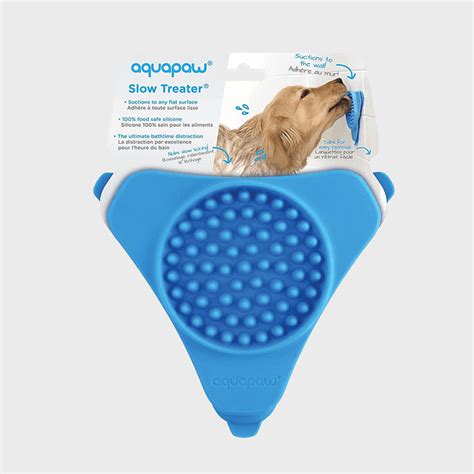Understanding Pet Oral Fixation
Oral fixation is a common behavioral issue in pets, particularly dogs and cats. It manifests itself as excessive licking, chewing, or biting of objects. While this behavior can be harmless in some cases, it can also lead to health problems such as:

- Gastrointestinal problems (e.g., vomiting, diarrhea)
- Dental disease (e.g., plaque, tartar buildup)
- Skin irritation
- Destruction of household items
Why Do Pets Develop Oral Fixation?
There are various factors that can contribute to the development of oral fixation in pets, including:
- Boredom and lack of mental stimulation: Pets who are bored or left alone for extended periods may engage in oral fixation as a way to relieve stress and boredom.
- Anxiety and stress: Pets experiencing anxiety or stress may resort to oral fixation as a coping mechanism.
- Underlying medical conditions: Some medical conditions, such as allergies or gastrointestinal disorders, can cause discomfort or itching that leads to excessive licking.
- Genetic predisposition: Certain breeds of dogs and cats are more prone to developing oral fixation. For example, Labrador Retrievers and German Shepherds are known to have a higher prevalence of this behavior.
Lick Mats: A Calming and Entertaining Solution
Lick mats have emerged as a popular and effective tool for addressing oral fixation in pets. These mats are made of a non-toxic and flexible material that can be spread with various treats or foods. When your pet licks the mat, it creates a soothing and entertaining experience that provides mental and physical stimulation.
Benefits of Lick Mats for Pets:
- Reduces boredom and anxiety: Lick mats provide a calming and engaging activity for pets, reducing stress and boredom.
- Promotes dental health: The act of licking helps to promote dental health by stimulating saliva production and removing plaque and bacteria.
- Prevents destructive chewing: By providing an alternative outlet for oral stimulation, lick mats can help to prevent pets from chewing on furniture or other household items.
- Provides cognitive stimulation: Lick mats challenge pets mentally by requiring them to use their tongues to retrieve the treats, promoting cognitive development.
How to Use Lick Mats Effectively:
- Choose the right mat: Select a lick mat that is the appropriate size and shape for your pet.
- Spread treats carefully: Apply a variety of treats to the mat, such as peanut butter, Greek yogurt, or wet food, to keep your pet entertained.
- Supervise your pet: Initially, supervise your pet while using the lick mat to ensure they don’t swallow large pieces or choke.
- Clean the mat regularly: Wash the lick mat thoroughly after each use to prevent the accumulation of bacteria.
Case Study: Oliver’s Lick Mat Journey
Oliver, a 2-year-old Labrador Retriever, struggled with severe oral fixation. He constantly licked furniture, chewed on toys, and even attempted to lick his own tail. His excessive licking caused significant skin irritation and hair loss. After several unsuccessful attempts to address the behavior, his veterinarian recommended trying lick mats.
With patience and consistency, Oliver’s owner introduced him to a lick mat spread with his favorite peanut butter. Within minutes, Oliver’s licking behavior reduced significantly. He became calmer and more relaxed, and his skin irritation gradually improved. Over time, Oliver’s oral fixation became manageable, and he no longer displayed destructive chewing or excessive licking.
Creative Applications of Lick Mats
In addition to addressing oral fixation, lick mats can also be used for a variety of creative applications, such as:
- Extended feeding: Spread kibble or wet food on the lick mat to slow down your pet’s eating and prevent overeating.
- Training aid: Use lick mats as a reward during training sessions to motivate your pet and make learning more enjoyable.
- Soothing for medical treatments: Apply soothing liquids or medications to the lick mat to help calm your pet during stressful procedures or recovery.
- Calming for travel: Place a lick mat with your pet’s favorite treat on the car or crate during travel to reduce stress and anxiety.
Frequently Asked Questions (FAQs)
-
Are lick mats safe for all pets?
Yes, lick mats are generally safe for all pets, including dogs, cats, and even rabbits. However, it’s important to supervise your pet while using the mat and to choose a mat that is the appropriate size to prevent choking. -
How often should I use lick mats?
Lick mats can be used as often as needed to address oral fixation or provide mental stimulation. However, it’s recommended to start with short sessions and gradually increase the duration as your pet becomes more comfortable with the mat. -
What treats can I put on lick mats?
A variety of treats can be used on lick mats, including peanut butter, Greek yogurt, wet food, pumpkin puree, and mashed bananas. Avoid using treats that are high in sugar or fat. -
How do I clean lick mats?
To clean lick mats, simply rinse them with warm soapy water. You can also wash them in the dishwasher on the top rack.
Conclusion
Pet oral fixation can be a frustrating and potentially harmful behavioral issue. However, with the help of lick mats, pet owners can effectively reduce excessive licking, promote dental health, and provide mental stimulation for their pets. By understanding the causes of oral fixation, utilizing lick mats appropriately, and exploring creative applications, pet owners can help their furry friends live happier and healthier lives.





















